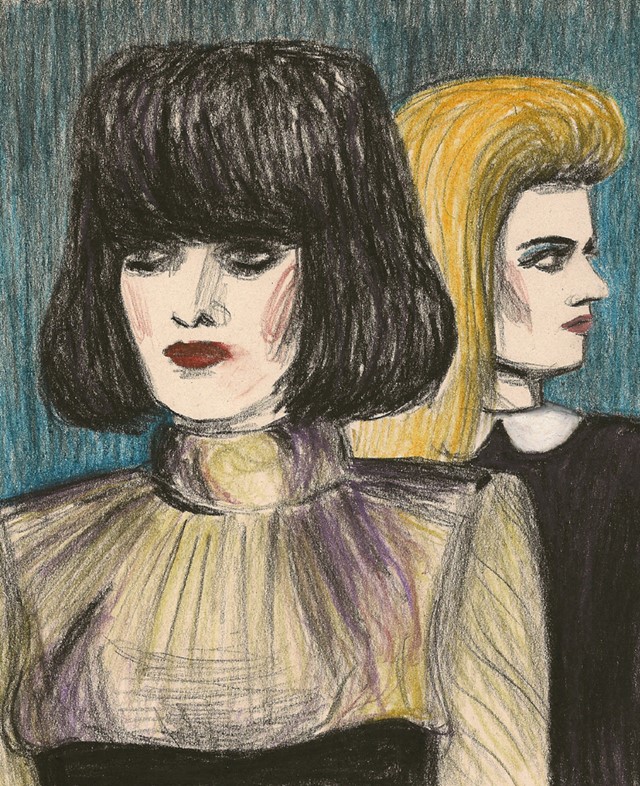The presence of collars, or indeed lack thereof, is often enough to establish the mood or feel of an entire season. So integral to sartorialism are they that a ‘workforce colourwheel’ was coined in the early 20thcentury...
The presence of collars, or indeed lack thereof, is often enough to establish the mood or feel of an entire season. So integral to sartorialism are they that a ‘workforce colourwheel’ was coined in the early 20th century to separate the businessmen in their starched whites from manual labourers, whose collars were of blue chambray. These little face-frames and curlicues that give even the squattest of necks a swan-like elegance are the skirting boards and dado rails of fashion – a pain to get straight and clean perhaps, but the overall look doesn’t work without them.
Take Marc Jacob’s autumn/winter 2011 collection for Louis Vuitton for instance. Here was pure sex, with ‘Night Porter’ inspired dominatrices stalking the catwalk, some smoking, some in PVC, some in bondage boots, some carrying handcuffed handbags. Nearly all however were topped off with Peter Pan collars. These diminutive and rounded shirt-toppers are mainly the preserve of children’s clothing – and Victorian children’s clothing at that. Jacobs hints that for all the fetishistic stockings and laced stilettos, there is always some fragment of normality or innocence, that however aggressively libidinous an outfit, it is only ever a uniform that is put on.
There is, of course, some essence of commercialism here too – the fact is that the blouse has returned to the fashion fore with a vengeance, after some seasons in the doldrums, and is once again a wardrobe staple. That a collar should look so ‘of the moment’ is perhaps precisely why Miuccia Prada decided hers should be retro. The falling collars that peeped out above Sixties-style swing coats and mackintoshes were of the ‘spread’ variety. That is, with plenty of space between the two points – giving them a naïvely space-age aspect. They were oversized too, playing further on the retro cartoonish aesthetic of the collection, as well as undercutting any notions of formality. These were not collars one would be desperate to remove after a day in the office.
Giles Deacon meanwhile worked on a very different assumption. His Edwardian-influenced collection featured high-neck collars of a very prim and proper variety. The great irony was that dresses and blouses were printed with Delaroche’s ‘The Execution of Lady Jane Grey’, a high-Romantic painting which features Grey herself sans collier. Part of the ceremonial grimness of being beheaded in the sixteenth and seventeenth centuries was the ritualistic removal of a nobleman or woman’s stately and starched ruffs and collars. It was a social leveller almost, in one’s final moments before God – for only the upper echelons could afford such embellishments. Deacon’s high-necks however speak of a considered uptight-ness, inviting a comparison between fitted form and the decorative facsimile.
But what of Raf Simons, who at Jil Sander showed coats, suits and jackets that were collarless? We might expect no more from a designer working in so avowedly minimal a vein: the stripping back to essentials, the lack of surface adornment are all leitmotifs of Simons’ and his ilk. But it also gives a refreshingly modern feel to clothing, beyond the sparseness to sportiness, and it is this mixing of high and low, of couture and casual for which Simons has been praised in recent seasons.
So decide which look you’re really going for, because there are more than fifty official collar types to choose from. And that’s before we even open the debate about whether they should be ‘popped’ or not.
Harriet Walker is a fashion writer at The Independent. Her book Less is More: Minimalism in Fashion is out now, published by Merrell. Zoë Taylor has appeared in Le Gun, Bare Bones, Ambit and Dazed & Confused. She is currently working on her third graphic novella and an exhibition.
